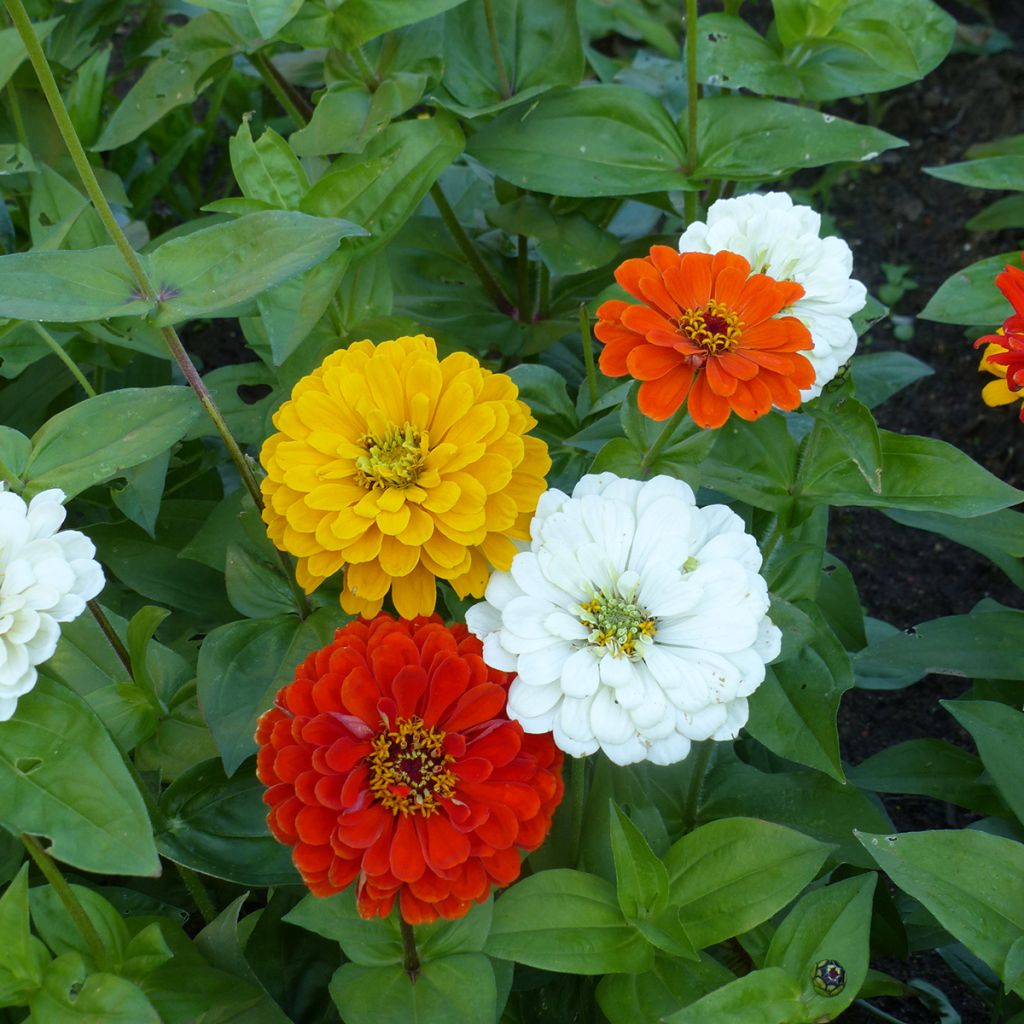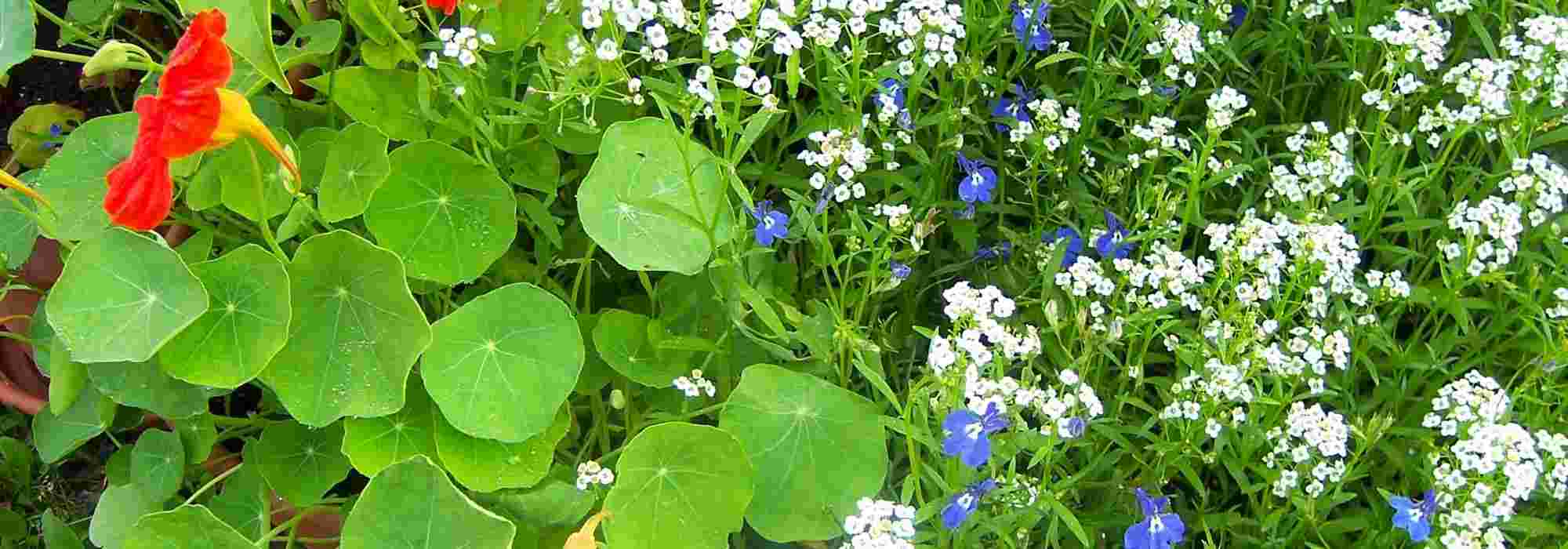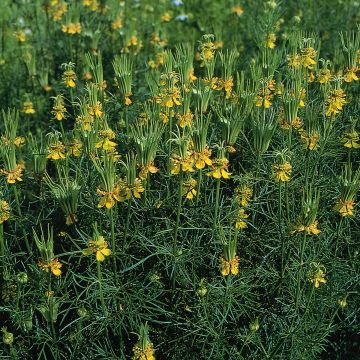

Zinnia elegans Citro Mix seeds
Zinnia elegans Citro Mix seeds
Zinnia x elegans Citro Mix
Common Zinnia, Elegant Zinnia, Youth-and-old-age
Special offer!
Receive a €20 voucher for any order over €90 (excluding delivery costs, credit notes, and plastic-free options)!
1- Add your favorite plants to your cart.
2- Once you have reached €90, confirm your order (you can even choose the delivery date!).
3- As soon as your order is shipped, you will receive an email containing your voucher code, valid for 3 months (90 days).
Your voucher is unique and can only be used once, for any order with a minimum value of €20, excluding delivery costs.
Can be combined with other current offers, non-divisible and non-refundable.
Home or relay delivery (depending on size and destination)
Schedule delivery date,
and select date in basket
This plant carries a 6 months recovery warranty
More information
We guarantee the quality of our plants for a full growing cycle, and will replace at our expense any plant that fails to recover under normal climatic and planting conditions.
Does this plant fit my garden?
Set up your Plantfit profile →
Description
Zinnia elegans 'Citro Mix' is a multicoloured blend of dahlia-flowered Zinnias. This annual, sown in spring, produces young plants that yield erect stems topped with very double, graceful pom-pom flowers throughout summer and into early autumn. In white, yellow, and orange shades, they brighten up borders and make very pretty bouquets for the home, both fresh and dried. This easy-to-grow plant requires little maintenance and thrives in sunny, well-drained soils. Sow the seeds in a seed tray with bottom heat from March onwards, or directly in the ground after the last frosts.
Zinnia belongs to the vast Asteraceae family, the second-largest in terms of species (over 23,000) after orchids. It includes both wildflowers from the countryside (dandelions, daisies...) and numerous ornamental plants (Gazanias, Asters...), easily recognisable by their inflorescences. These are composed of central, fertile tubular flowers (resembling the centre of a single flower), surrounded by sterile peripheral flowers, often mistaken for petals. These inflorescences, or flower heads, mistakenly taken for single flowers, explain the former name of the family, Compositae.
The Zinnia genus includes 20 species of annual and perennial plants, including Zinnia elegans, which is native to Mexico. It is frost-sensitive and therefore grown as an annual in our climate. Breeders have developed many horticultural varieties, including this Citro Mix blend. The seeds produce branched young plants that begin flowering in June-July and bloom until October, ensuring many months of colour. Each plant forms a branched clump that reaches about 75 cm in height and 30 cm in width within a few weeks. The medium to dark green foliage consists of ovoid leaves with pointed tips. These sessile (lacking a petiole) leaves are opposite and decussate, meaning they are inserted opposite each other, with each rank offset by 90 degrees from the previous one. They are downy, inserted on hollow, moderately brittle stems. Flowering, which begins 10 to 13 weeks after sowing, produces superb white, light yellow, bright yellow, and orange flowers (inflorescences). They are very double, with a pom-pom form like some Dahlias, giving them incredible charm. Measuring approximately 6 cm in diameter, they are beautifully highlighted by the darker vegetation. Renewing themselves week after week, especially if spent flowers are removed, they bring joy to the garden and make very pretty bouquets, fresh or even dried, to decorate the home even after the growing season.
The seeds of Zinnia 'Citro Mix' will provide a superb result with little cost and effort. Easy to grow even in poor soils, Zinnias thrive even in stony ground and under scorching sun. Pair them with other annuals with similar needs, such as Verbena bonariensis, whose narrow leaves and purple flower colour will provide a pleasing contrast. It is also a good cut flower to accompany your Zinnia in bouquets. Globe amaranth 'Purple' will also be a good companion, with its small purple pom-poms from July to September. Cosmos, with their finely cut foliage and varied colours, will complete your summer display.
Flowering
Foliage
Plant habit
Botanical data
Zinnia
x elegans
Citro Mix
Asteraceae
Common Zinnia, Elegant Zinnia, Youth-and-old-age
Cultivar or hybrid
Planting and care
Sow Zinnia elegans 'Citro Mix' seeds directly outdoors in May, once the soil has warmed. Choose a location in full sun on soil that has been previously weeded, loosened, and maintained moist, well-drained, and well-worked. Sow the seeds at a depth of 3 mm in holes spaced 30 cm apart. Water regularly, especially during dry periods. Germination usually takes 7 to 14 days. When the young zinnia plants are large enough to handle, thin them out to space the plants 30 cm apart.
You can also sow indoors in a seed tray using standard seed compost, from March to April, at a temperature of 18-20°C. After sowing, keep the surface of the compost moist but not waterlogged, and expose your sowing to light, which encourages germination. When the young plants are large enough to handle, transplant them and grow them in cooler conditions.
When the plants are well developed and all risk of frost has passed, acclimatise them gradually to outdoor conditions for 10-15 days before planting outside in their final position. Zinnia elegans are easy plants to grow in the sun, in well-drained to dry, fairly rich, even clayey soil. They are susceptible to powdery mildew in humid climates, especially if they do not benefit from good air circulation around them. They thrive in climates with long, hot, and dry summers. They are not at all hardy.
Sowing period
Intended location
Planting & care advice
This item has not been reviewed yet - be the first to leave a review about it.
Similar products
Haven't found what you were looking for?
Hardiness is the lowest winter temperature a plant can endure without suffering serious damage or even dying. However, hardiness is affected by location (a sheltered area, such as a patio), protection (winter cover) and soil type (hardiness is improved by well-drained soil).

Photo Sharing Terms & Conditions
In order to encourage gardeners to interact and share their experiences, Promesse de fleurs offers various media enabling content to be uploaded onto its Site - in particular via the ‘Photo sharing’ module.
The User agrees to refrain from:
- Posting any content that is illegal, prejudicial, insulting, racist, inciteful to hatred, revisionist, contrary to public decency, that infringes on privacy or on the privacy rights of third parties, in particular the publicity rights of persons and goods, intellectual property rights, or the right to privacy.
- Submitting content on behalf of a third party;
- Impersonate the identity of a third party and/or publish any personal information about a third party;
In general, the User undertakes to refrain from any unethical behaviour.
All Content (in particular text, comments, files, images, photos, videos, creative works, etc.), which may be subject to property or intellectual property rights, image or other private rights, shall remain the property of the User, subject to the limited rights granted by the terms of the licence granted by Promesse de fleurs as stated below. Users are at liberty to publish or not to publish such Content on the Site, notably via the ‘Photo Sharing’ facility, and accept that this Content shall be made public and freely accessible, notably on the Internet.
Users further acknowledge, undertake to have ,and guarantee that they hold all necessary rights and permissions to publish such material on the Site, in particular with regard to the legislation in force pertaining to any privacy, property, intellectual property, image, or contractual rights, or rights of any other nature. By publishing such Content on the Site, Users acknowledge accepting full liability as publishers of the Content within the meaning of the law, and grant Promesse de fleurs, free of charge, an inclusive, worldwide licence for the said Content for the entire duration of its publication, including all reproduction, representation, up/downloading, displaying, performing, transmission, and storage rights.
Users also grant permission for their name to be linked to the Content and accept that this link may not always be made available.
By engaging in posting material, Users consent to their Content becoming automatically accessible on the Internet, in particular on other sites and/or blogs and/or web pages of the Promesse de fleurs site, including in particular social pages and the Promesse de fleurs catalogue.
Users may secure the removal of entrusted content free of charge by issuing a simple request via our contact form.
The flowering period indicated on our website applies to countries and regions located in USDA zone 8 (France, the United Kingdom, Ireland, the Netherlands, etc.)
It will vary according to where you live:
- In zones 9 to 10 (Italy, Spain, Greece, etc.), flowering will occur about 2 to 4 weeks earlier.
- In zones 6 to 7 (Germany, Poland, Slovenia, and lower mountainous regions), flowering will be delayed by 2 to 3 weeks.
- In zone 5 (Central Europe, Scandinavia), blooming will be delayed by 3 to 5 weeks.
In temperate climates, pruning of spring-flowering shrubs (forsythia, spireas, etc.) should be done just after flowering.
Pruning of summer-flowering shrubs (Indian Lilac, Perovskia, etc.) can be done in winter or spring.
In cold regions as well as with frost-sensitive plants, avoid pruning too early when severe frosts may still occur.
The planting period indicated on our website applies to countries and regions located in USDA zone 8 (France, United Kingdom, Ireland, Netherlands).
It will vary according to where you live:
- In Mediterranean zones (Marseille, Madrid, Milan, etc.), autumn and winter are the best planting periods.
- In continental zones (Strasbourg, Munich, Vienna, etc.), delay planting by 2 to 3 weeks in spring and bring it forward by 2 to 4 weeks in autumn.
- In mountainous regions (the Alps, Pyrenees, Carpathians, etc.), it is best to plant in late spring (May-June) or late summer (August-September).
The harvesting period indicated on our website applies to countries and regions in USDA zone 8 (France, England, Ireland, the Netherlands).
In colder areas (Scandinavia, Poland, Austria...) fruit and vegetable harvests are likely to be delayed by 3-4 weeks.
In warmer areas (Italy, Spain, Greece, etc.), harvesting will probably take place earlier, depending on weather conditions.
The sowing periods indicated on our website apply to countries and regions within USDA Zone 8 (France, UK, Ireland, Netherlands).
In colder areas (Scandinavia, Poland, Austria...), delay any outdoor sowing by 3-4 weeks, or sow under glass.
In warmer climes (Italy, Spain, Greece, etc.), bring outdoor sowing forward by a few weeks.
















































